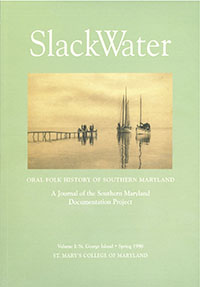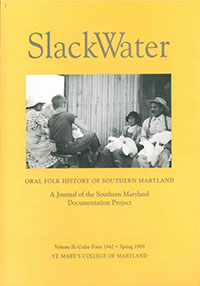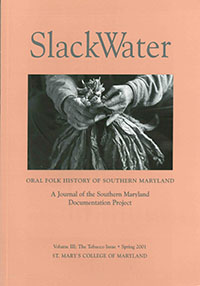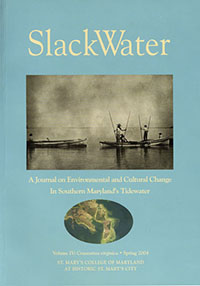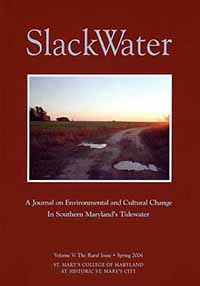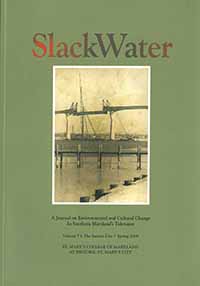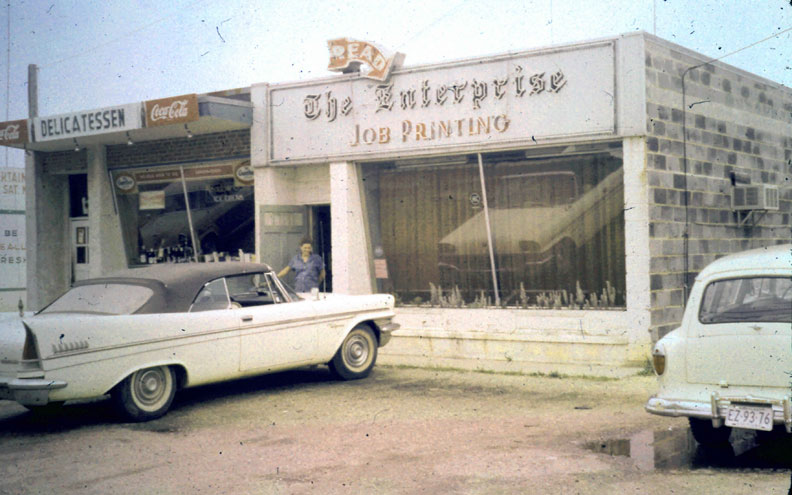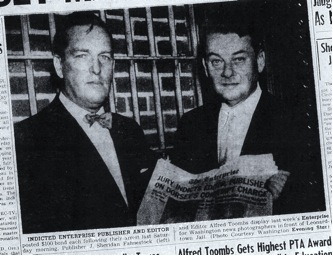August 1957. Leonardtown, Maryland. A hand holds out a piece of paper listing criminal charges against The Enterprise, a weekly newspaper published in Lexington Park. Enterprise reporter Val Hymes, nervously taps at a typewriter, producing six copies of the charges. Hymes then races out of the St. Mary’s County Circuit Court House, jumps into her car, and flies the fifteen miles to Great Mills Road in Lexington Park.
At the end of a shopping strip sits a tiny newsroom where the staff of The Enterprise waits. Publisher Sheridan Fahnestock and Editor Alfred Toombs are calm despite knowing what is on the way. As Val bursts through the door, charges in hand, the small room jumps into action. Within minutes, everyone in the room is on the phone, calling every news outlet from The Baltimore Sun to The Washington Post, from The Associated Press and Reuters to Time magazine.
More than half a century later, Don Hymes, Val’s husband and editor of The Enterprise from 1957 until 1962, recalls the times: “St. Mary’s County was a backwater—a rural dead-end peninsula where politics was corrupt and slot machines were king. In the 1940s, a wartime government had forced a naval air station upon an unwelcoming population of tobacco farmers and watermen, providing plenty of coins to keep the wheels spinning. This new stream of revenue headed right into the pockets of the political machine, giving it even more ammunition—and motivation—to control every aspect of government, including law enforcement and the courts.”
The charges being considered by a grand jury were the result of a longstanding feud between The Enterprise and an old and politically powerful county family led by Judge Philip H. Dorsey, Jr. Dorsey, together with other prominent political figures, Democrat and Republican, “ran the show,” Hymes recalled. Their power depended on patronage and loyalty, what Hymes and other observers have described as ‘machine politics.’ This was the ‘old county.’
The Enterprise represented the ‘new county,’ a place increasingly populated by outsiders who had come to St. Mary’s with the Patuxent River Naval Air Station. The times, they were a-changin’, and many of these outsiders were calling for modernization in all facets of county life, especially politics.
Fahnestock and Toombs were outsiders. The wealthy and patrician Fahnestock had come to the county from New York after traveling in the South Pacific, where, along with his brother, he had assembled a world class collection of South Sea Island music and dance traditions. A family friend of President Franklin D. Roosevelt, Fahnestock had also served as an undercover U.S. intelligence agent in the South Pacific during World War II. Toombs, who had served in the CIA during the war, hailed from Chicago, where he had previously worked in “the big-city news business,” including the Chicago Tribune, the Washington Daily News, and The Star.
The bitter relationship between The Enterprise and the ‘cronies,’ as Val Hymes describes the political players, began long before 1957. But it was a tip Val received that led to the grand jury proceedings. According to the tip, a member of Maryland’s attorney general’s office in Annapolis had scolded Judge Dorsey for making what the state’s top lawyers considered questionable appointments to the Property Review Board. Property review boards had been established in every county to evaluate prices paid by the state for land acquired for transportation purposes. The Enterprise suggested that, in St. Mary’s, where roads were increasingly under construction, insider information was being used to turn a profit in the acquisition of state land, and the machine’s cronies, led by Judge Dorsey, were benefiting.
“Why should people think that just because four out of Judge Dorsey’s five appointees are active in political life here that this has any connection? Really!” asked The Enterprise, enraging Dorsey and his supporters. Dorsey had had enough and was not going to take any more damaging coverage. Obliging, the grand jury handed down four indictments, charging The Enterprise with “obstruction of justice” and being a “public nuisance.” Almost every member of the small Enterprise staff was called before the grand jury by the state's attorney—Judge Dorsey’s son, Walter—on a day the lawyer found particularly fitting: publication day.
Judge Dorsey, Hymes recalls, hoped that the charges would intimidate The Enterprise and embarrass its editor and reporters into silence. For their part, the staff knew that there was “not a prayer in the world that the indictments could stop The Enterprise.”
When Val came rushing through The Enterprise door that day in 1957, Fahnestock and Toombs were ready to fight for a free press with a familiar weapon: newspapers. Not just theirs, but any newspaper that would carry their story. The region’s metropolitan newspapers and, indeed, even Time magazine got in on the act, reporting and commenting on what The Washington Post and Times Herald described as the “highly clannish” Southern Marylanders who were “watching their familiar native world being transformed into another exurbia.”
The charges against The Enterprise were eventually dropped, but the gauntlet had been thrown down. The Enterprise—which ironically Judge Dorsey had sold to Fahnestock in 1946—was the bellwether for a new phase of political life in St. Mary’s County, one in which “the public had a right to know about all public business.” Native countian Margaret Fresco wrote in a letter to the paper, “It is about time the ‘old order changeth’ in St. Mary’s,” and she welcomed “the young, progressive, and wholesome element.”
J. Frank Raley was one of the "young, progressive" people Mrs. Fresco was talking about. While The Enterprise took on the "machine" through the press, Raley and his colleagues used the ballot for another kind of reckoning.
Adapted and abridged from SlackWater, Volume VI: The Instant City.

